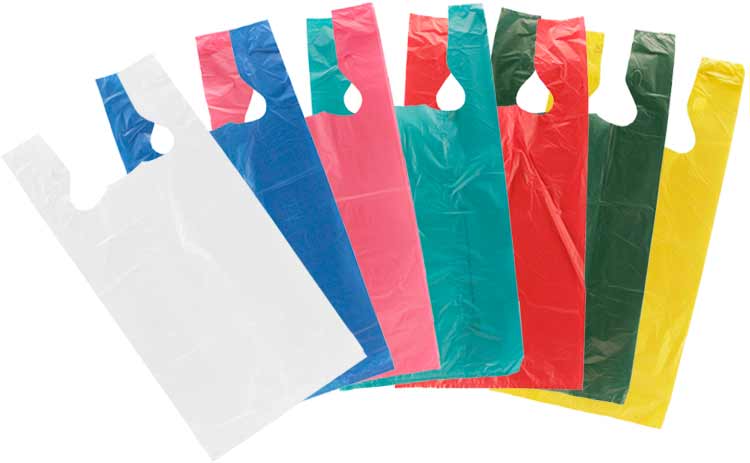

Polyethylene is one of the most commonly-used plastic types that can serve many different purposes.
They are made from the polymerization of ethylene gas and have a wide range of applications ranging from bottles and plastic bags to industrial applications.
The type of application will determine the density of the plastic. This post will explain the difference between HDPE, LDPE, and LLDPE bags.
Polyethylene is thermoplastic polymers that are made from the chemical compound ethylene. They have existed since the 1950s when Karl Ziegler and Giulio Natta, a German and Italian scientist discovered the polymerization process that produces polyethylene.
Since then, polyethylene has branched out to suit numerous applications. The process of polymerization of ethylene causes long linear chains of hydrocarbons to branch in different directions.
The variations in the branching structure are what separate different polyethylene from each other.
For instance, permeable plastics such as water bottles, shopping bags, etc. are subject to high density while non-permeable plastics such as tanks, film & sheets, envelopes and the likes are subject to low density.
There is also linear low-density polyethylene plastic but how is it different from the rest? Read on to learn more.
Before visiting a plastic company in Malaysia, you may want to know the different types of polyethylene and their various applications. Check out the different types of polyethylene and how they differ from each other.
LDPE is generated from free radical polymerization which results in short and long branching of chains. This sort of polyethylene is highly ductile but has low tensile strength and durability. LDPE is commonly used for making grocery polythene bags, bottles, film wraps, plastic bowls, and more.
HDPE has more of an industrial usage thanks to its properties. Unlike LDPE, HDPE has a minimal number of branches of chains resulting from polymerization.
This sort of polyethylene is densely packed and bonded molecules which make it rigid, durable, and robust. HDPE commonly finds applications in pipe systems, tubing, toys, fixtures, cans, among others.
The polymerization of LLDPE results in multiple short branches. When elongated, the structurally short branches easily slide against each other, without entangling in each other. LLDPE is strong, durable, and offers “puncture resistance” to the product.
As a result, its durability and tensile strength are higher than LDPE. LLDPE bags can be used for food packaging; however, these need to comply with FDA regulations relating to food packaging.
In terms of strength, rigidity, and resistance, HDPE excels. It is the strongest, toughest, and most chemical resistant.
HDPE’s strength can be traced from its densely packed cell structure that makes it almost impenetrable for other molecules to penetrate on a microscopic level. Both LLDPE and LDPE aren’t as strong or dense as HDPE.
HDPE can withstand any form of resistance, including UV-resistant/puncture-resistant, more than LDPE and LLDPE. HDPE’s strength, toughness, and resistance make it widely used in industrial ponds, container liners for oil tanks, and applications where chemical resistance is required.
In terms of popularity, LDPE edges over HDPE and LLDPE. Low-Density Polyethylene is the most common type of plastic sheeting. LDPE finds application in agriculture, tarps, construction, surface protection applications, covers of all sorts, and much more.
LDPE is the most flexible polyethylene while HDPE is the least flexible. In flexible sheeting forms, LDPE measures between 0.5 mil thick to 40 mil thick. Compare this with HDPE’s thickness which ranges from 12 mils to100 mil. Due to its flexibility, LDPE conforms well to a variety of surfaces.
Each liner will vary by its thickness depending on its cellular structure, conformity, and molecular bond with each other.
Before patronizing any plastic company in Malaysia, how do you know the right polyethylene to choose? Well, that depends on what you are looking for.
Ask yourself the following questions:
LDPE, LLDPE, and HDPE can be used for a variety of applications, from domestic to industrial. The ideal plastic bag factory will provide LLDPE, LDPE, and HDPE polyethylene bags in different specifications to meet your requirements.
Note that each polyethylene is distinct from the other – no one polyethylene is better than another. According to their unique properties, they can fulfil different purposes from light bags to heavy gauges.
Are you on the look for specific types of polyethylene bags? If so, ensure you reach out to an established plastic bag supplier or HDPE bag manufacturer in Malaysia.
For further information, feel free to get in touch with our plastics specialists at Teong Chuan Plastic (M) Sdn Bhd.